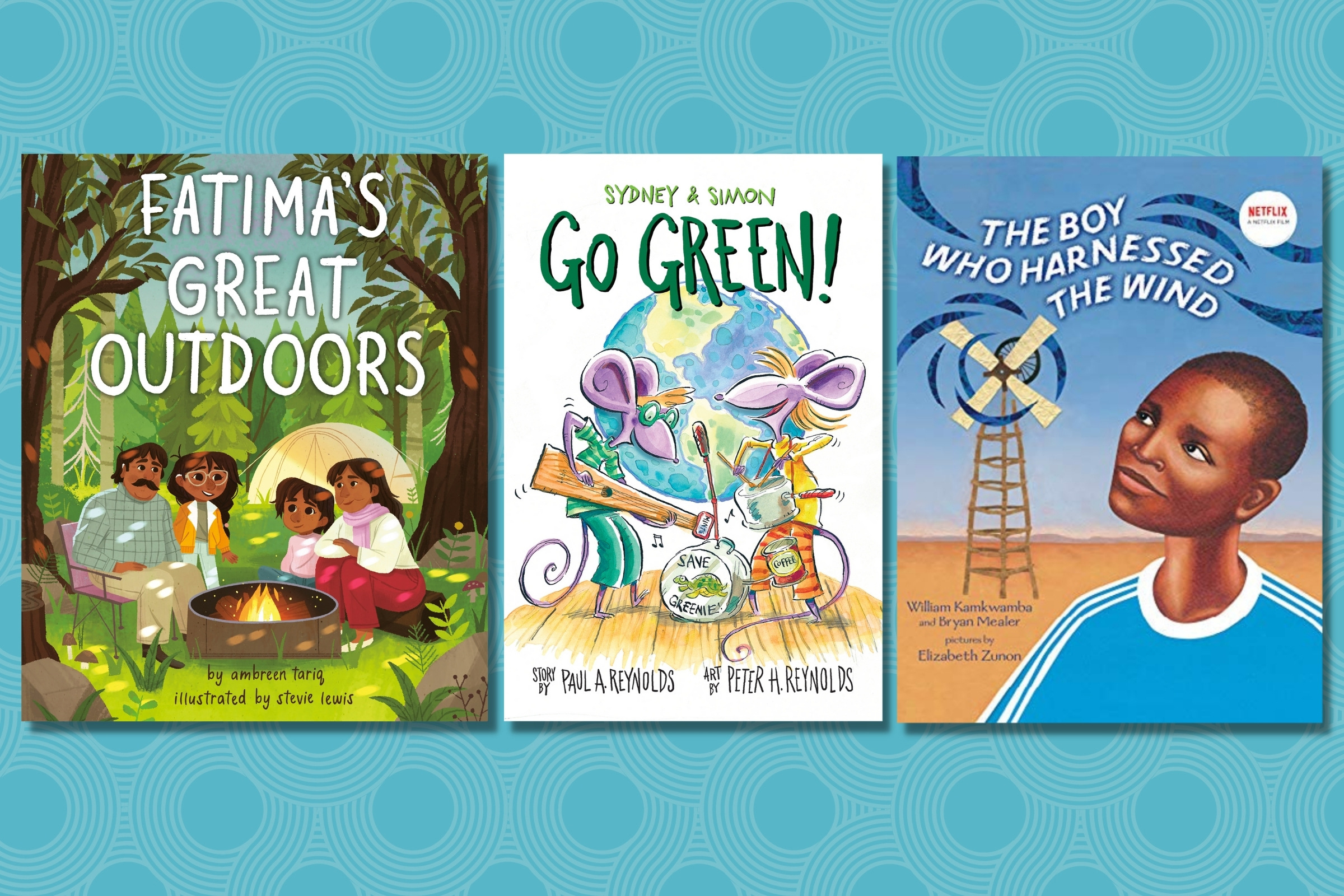
Climate change is not a pleasant thing to think about. It’s complicated and contentious. It can feel overwhelming and frightening. It can even seem hopeless at times. Which is why talking about it with children can be daunting.
But children today are being introduced to climate change concepts much earlier than their older family members. Unlike their parents and grandparents, they are growing up in a world that is both experiencing the impacts of climate change and actively adapting to it. They are part of a broad generational movement of young activists who want to address climate change. A third of all U.S. students across 20 states and Washington, D.C. are learning from Next Generation Science Standards (NGSS), which have climate change education guidelines. Additionally, children are being exposed to the subject by their peers, and even some kid-friendly TV shows that touch on the theme.
Fortunately for young kids—and the adults who may feel intimidated by the topic—there’s no shortage of literature to help with the tough job of explaining what climate change is while also opening up space to talk about it and ask questions. What follows below is a list of recommended books curated by TIME and TIME For Kids that are suitable for elementary schoolers.
To make the list, we asked for submissions from a range of experts, including members of the North American Association of Environmental Education. We considered how age-appropriate the material was, based on NGSS guidelines, and whether the tone and storyline left the reader feeling engaged and empowered—rather than anxious, or overwhelmed. The books are bundled by theme, not by grade or reading level, to meet children at whatever stage they happen to be, both academically and emotionally.
Books Exploring The Beauty And Fragility of Nature
Before introducing children to climate change, it’s important to give them a foundational love and curiosity of the environment. Early elementary kids, in particular, aren’t ready to grasp the nuts and bolts of climate science. But they’re capable of developing an appreciation for the world around them.
“If I love it, I’ll care about it, and if I care for it, I’ll respect it,” says Kottie Christie-Blick, a climate education consultant who taught elementary children for 30 years. “You want to inspire children so they feel that nature is so important that they want to do something.”
The most effective books don’t portray wilderness as a scary place—even the dark forests and the deep oceans. The following titles introduce kids to the planet’s wonders.
Thank You, Earth: A Love Letter To Our Planet, April Pulley Sayre
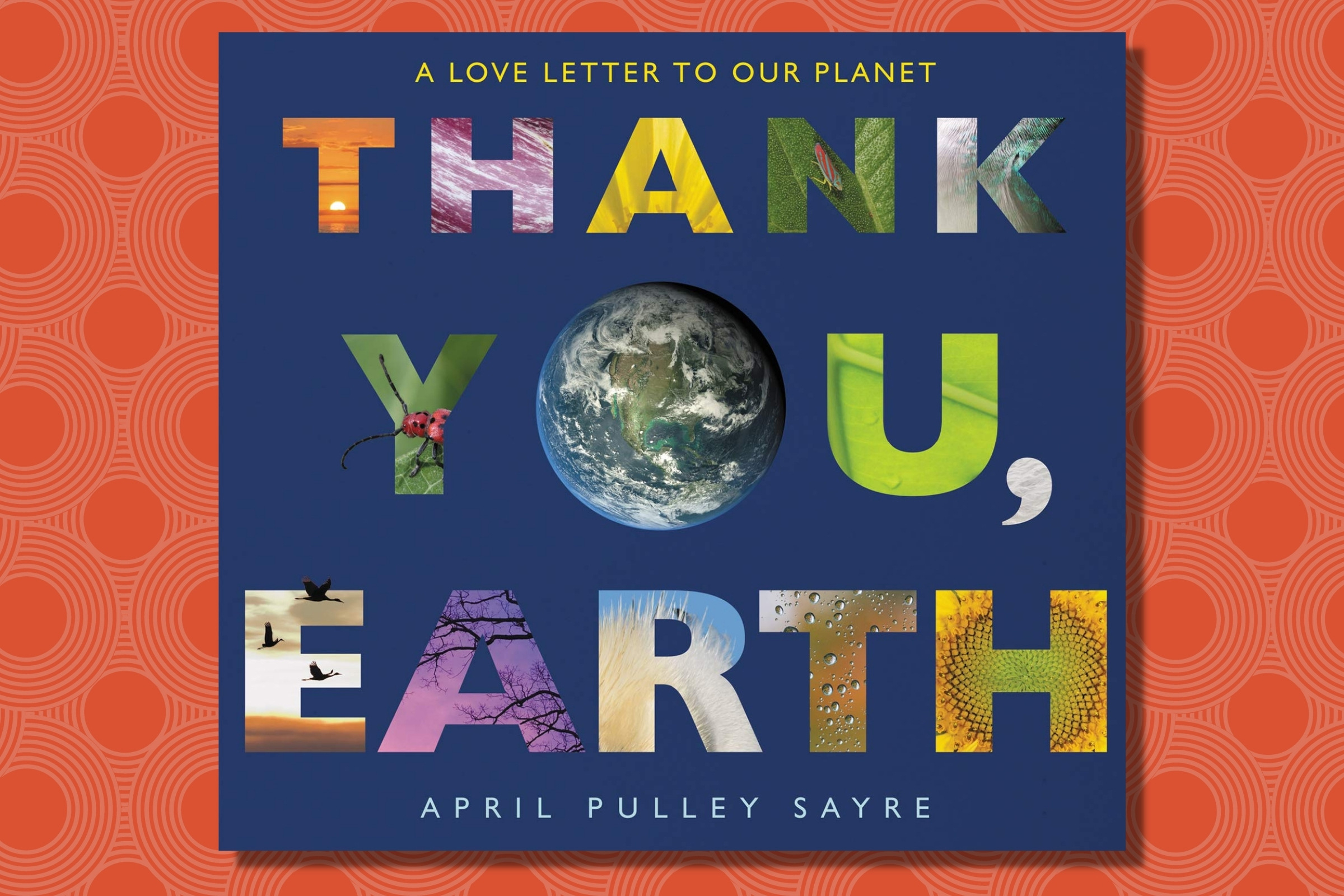
This photography book captures plants, animals, landscapes, and weather in vivid colors and textures. From up close images of tiny insects and flower buds to panoramic vistas of towering forests and mountain ranges, the pages introduce children to the diversity of the planet in a simple but effective way.
Buy Now: Thank You, Earth: A Love Letter To Our Planet on Bookshop | Amazon
Moth: An Evolution Story, Isabel Thomas and illustrated by Daniel Egnéus
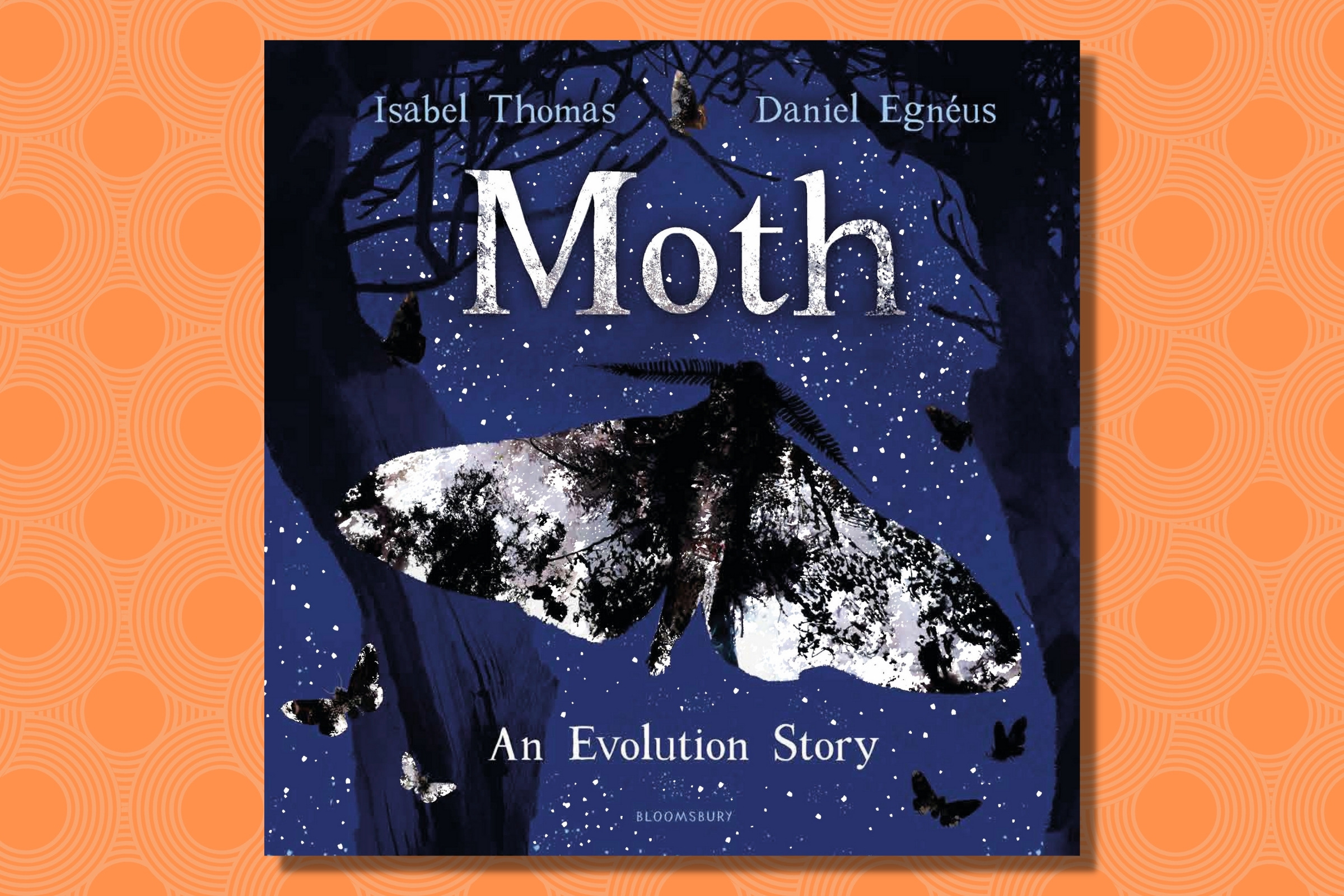
Using a moth species in 19th century England as a true example, this picture book showcases why living things need the environment to survive, and what happens when that environment changes. In this case, the moths evolved to have darker wings to better camouflage themselves on soot-covered trees—a tale that offers kids a gentle introduction to the concepts of adaptation and natural selection, as well as the impacts of industrial pollution.
Buy Now: Moth: An Evolution Story on Bookshop | Amazon
Fatima’s Great Outdoors, Ambreen Tariq and illustrated by Stevie Lewis

Author Ambreen Tariq, who advocates for diversifying public lands and runs the Instagram account @BrownPeopleCamping, wrote this story of an immigrant family’s camping trip. The experience helps the young Indian-American protagonist escape the challenges of being the new kid at school, reinforcing the idea that everyone has a right to seek solace in nature.
Buy Now: Fatima’s Great Outdoors on Bookshop | Amazon
Books That Tackle The Causes And Effects Of How We Treat Our Planet
In order for kids to eventually understand what carbon emissions are (and why they are changing our climate) they need to first grasp the basic principles of environmental impact. Children’s books often use fantasy and metaphors to show that human activities can harm the natural resources upon which both humans and animals rely.
“A child needs to know, we don’t waste water because that’s hard for the earth,” says Christie-Blick. “And we recycle because that keeps trash from going to the dump and that helps the earth.”
The following books can foster awareness of human activity. They introduce fundamental ways that kids can respect the environment, while revealing the consequences of treating our planet with disregard.
The Lorax, Dr. Seuss
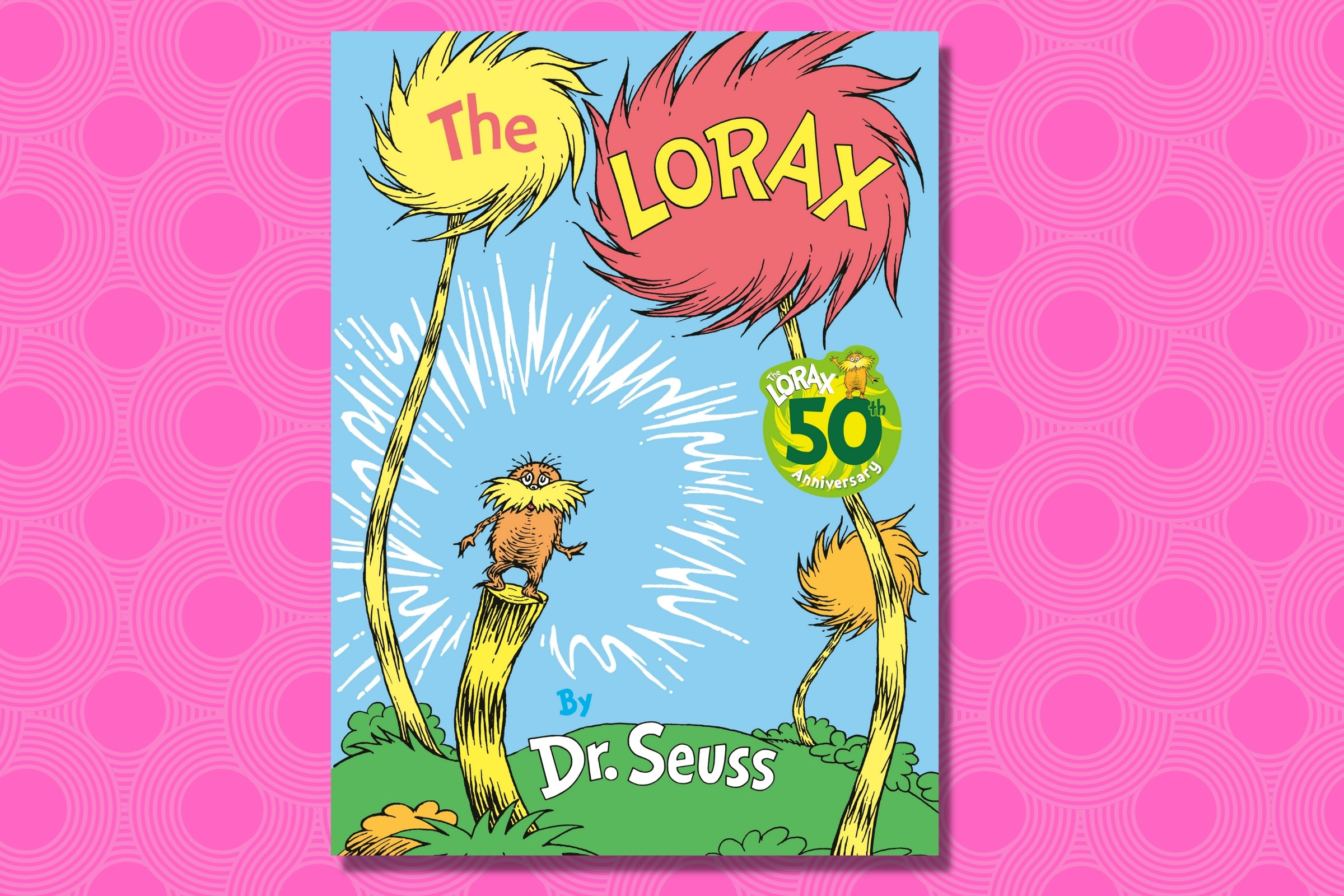
This classic story first published in 1971 warns of the dangers of exploiting the planet’s natural resources. Thanks to its rhyme and whimsical illustrations, the cautionary tale is appropriate for both younger audiences who are learning about the scarcity and fragility of natural resources, and also older children who can grasp the dangers of valuing short-term profits over long-term environmental harm.
Buy Now: The Lorax on Bookshop | Amazon
Willodeen, Katherine Applegate
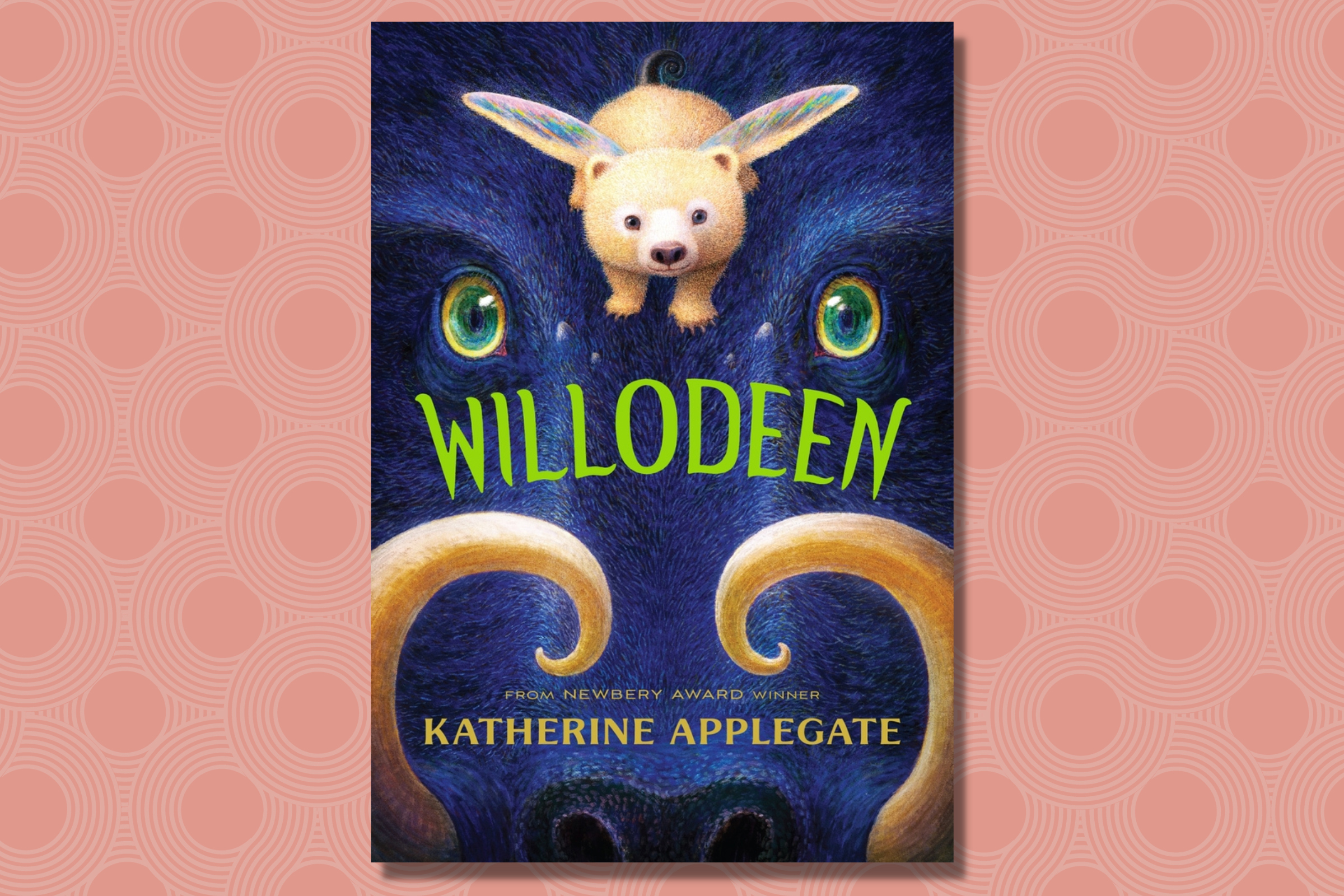
This fantastical chapter book explores how ecosystems are interconnected. The story follows a young girl who loves all creatures—no matter how ugly or smelly—as she notices changes in the groves around her village. Gradually, she realizes that villagers who overhunted an undesirable “pest” disrupted the natural balance of things—to the detriment of both the wild animals and her community. Though written for older children, this book is appropriate for younger audiences as a read-aloud.
Buy Now: Willodeen on Bookshop | Amazon
Sydney & Simon Go Green! Paul A. Reynolds and art by Peter H. Reynolds
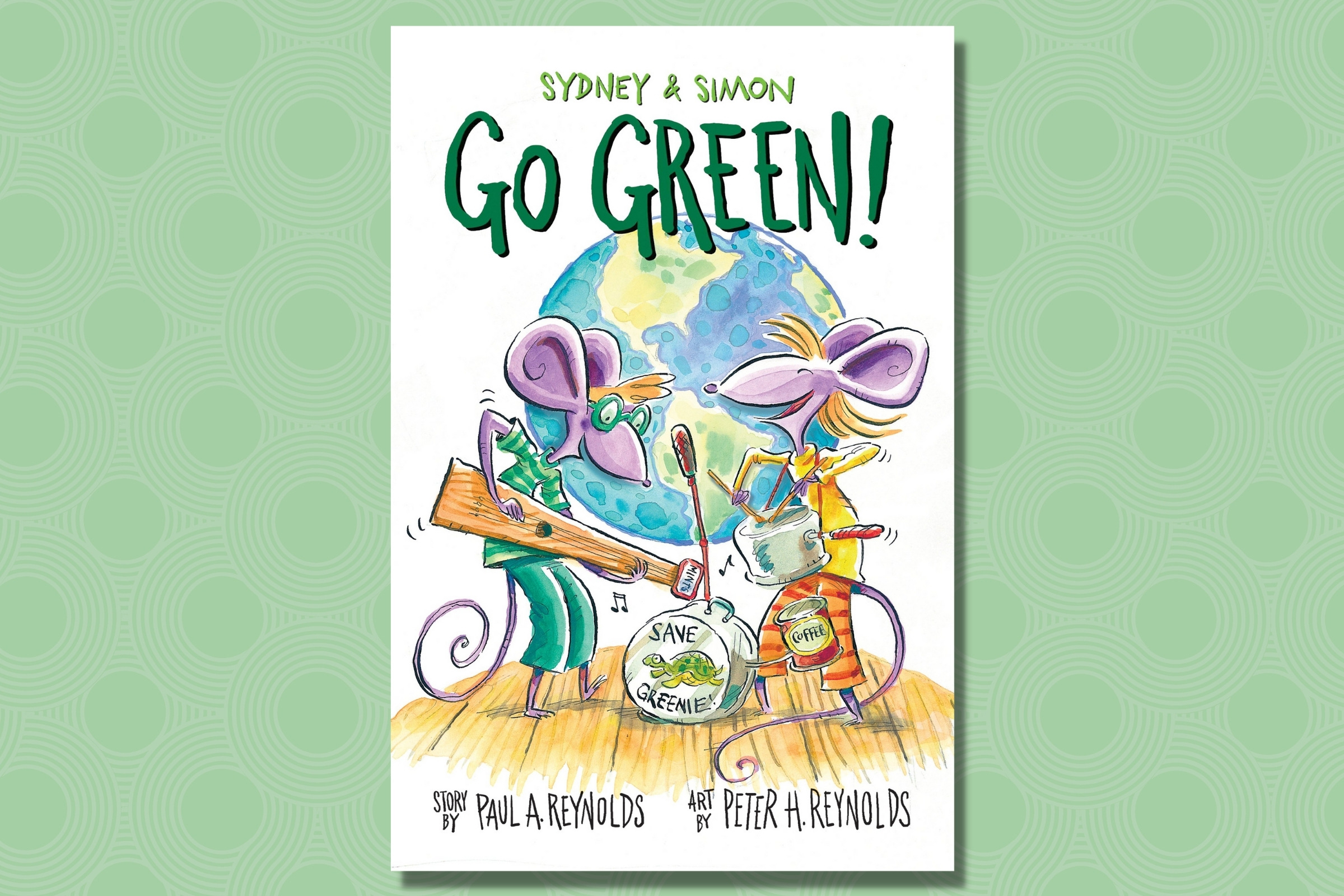
An illustrated chapter book that follows two mice as they observe how trash accumulates at home and at school. Using basic data collection methods, they are able to identify where they can reduce their impact and spread their message of going green throughout their community.
Buy Now: Sydney & Simon Go Green! on Bookshop | Amazon
Books To Support Little Activists
For children who express a desire to be more engaged in the climate change fight, there are many stories to inspire greater activism. While there’s no set age at which children will feel compelled to do more, says Christie-Blick, adults can assess which forms of engagement—from letter writing to protesting—are developmentally fitting.
“Activism depends on the child,” she says. “It’s like asking when are they ready to talk about sex. Well, when they are asking questions about it. You want to educate to a level that’s appropriate academically and emotionally.”
We Are Water Protectors, Carole Lindstrom and illustrated by Michaela Goade

This book weaves a narrative poem through beautifully illustrated pages, paying homage to the Indigenous tribal nations that are working to protect earth’s natural resources. Using images and metaphors, the story focuses on the dangers of oil pipelines that threaten water sources, without ever explicitly mentioning them. Children will learn the value of community action, while adult readers will recognize the story of the Standing Rock Sioux’s fight against the Dakota Access Pipeline.
Buy Now: We Are Water Protectors on Bookshop | Amazon
Sofia Valdez, Future Prez, Andrea Beaty and illustrated by David Roberts

After an unfortunate encounter with a pile of trash, a second grader leads the charge to make her community a cleaner place. The catchy rhyme scheme will entice young readers, while the story of her persistence at city hall will hook them. The child’s hard work does pay off in the end as she rallies supporters and finally gets through to the mayor—a lesson for young readers that one person can make a big difference.
Buy Now: Sofia Valdez, Future Prez on Bookshop | Amazon
The Boy Who Harnessed the Wind (picture book edition), William Kamkwamba and Bryan Mealer, with pictures by Elizabeth Zunon

Malawi is an agricultural country that is highly vulnerable to droughts. This memoir recounts the country’s severe drought and famine about 20 years ago, when author William Kamkwamba was a teenager. His village had no resources for advanced irrigation or even electricity. So, Kamkwamba builds a wind turbine from scrap materials, bringing both light and water to his community—an inspiring story for future clean energy engineers.
Buy Now: The Boy Who Harnessed the Wind on Amazon
Saving American Beach, Heidi Tyline King and illustrated by Ekua Holmes
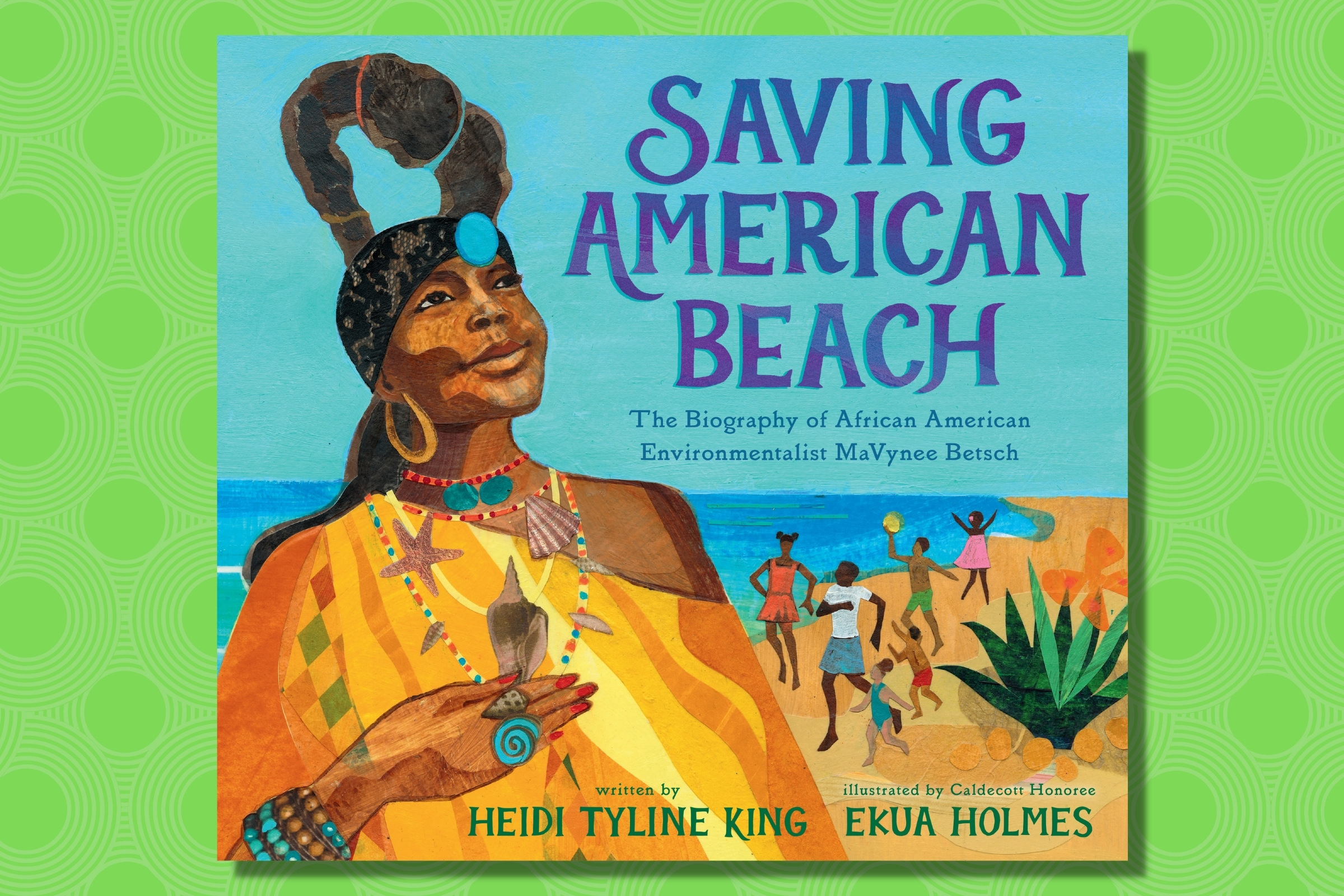
American Beach was once a haven for Black people who were prohibited from accessing certain beaches during the era of Jim Crow segregation. This biography traces the life of MaVynee Betsch, an environmentalist who worked to restore and preserve that historically significant coastal land.
Buy Now: Saving American Beach on Bookshop | Amazon
Books That Dig Into The Science
Near the end of elementary school, kids often start to grasp the physical nature of greenhouse gasses. This collection of books can help develop their understanding of climate science using stories, illustrations, and interactive features that are original and engaging.
The Magic School Bus and the Climate Challenge, Joanna Cole and Bruce Degen
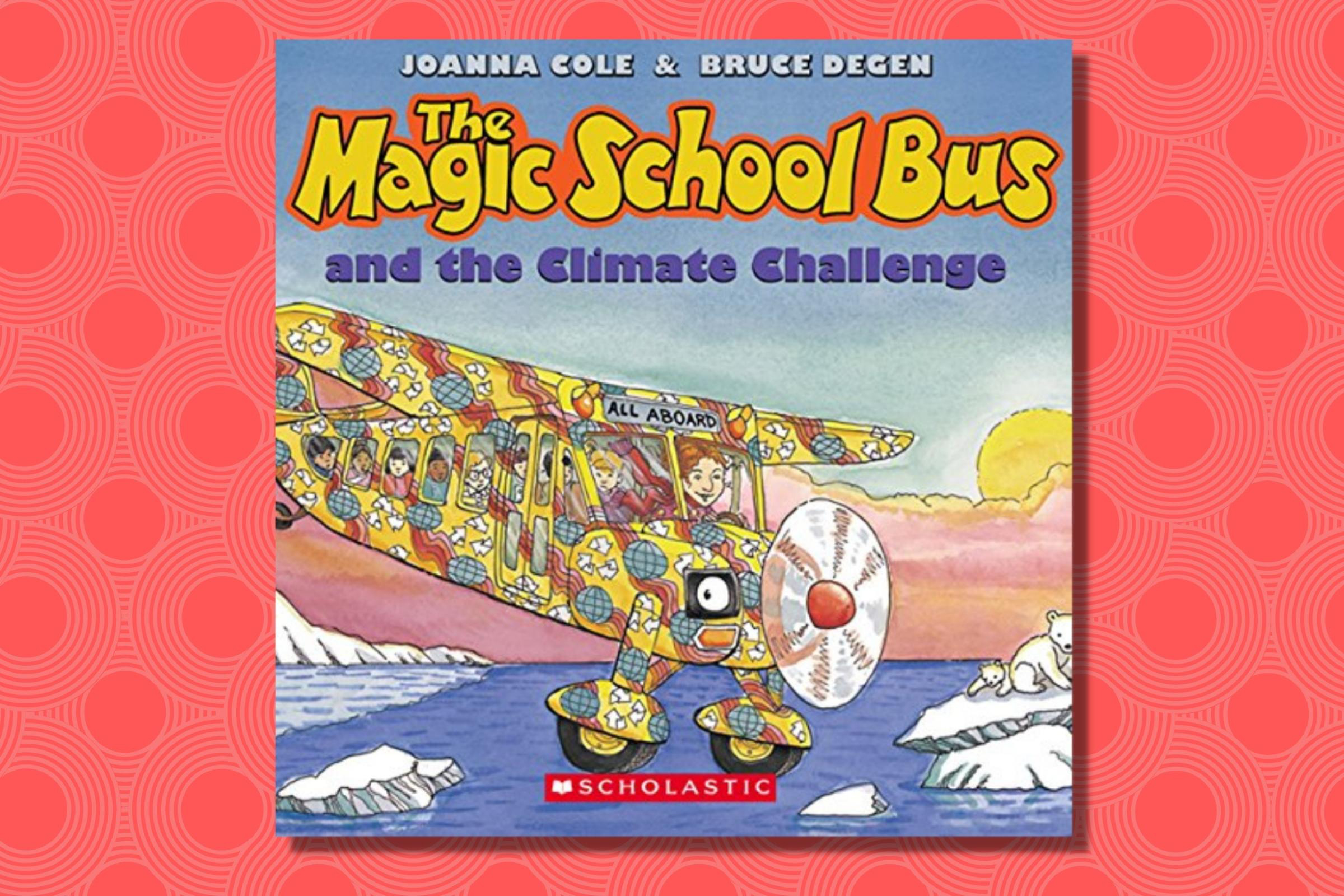
Part of the popular “Magic School Bus” series, this book follows Ms. Frizzle’s class on one of her eccentric field trips—this time to survey all the places on earth that are changing due to global warming. Along the way, she explains the concept of greenhouse gasses, even giving her students special goggles in order to magically “see” the invisible carbon dioxide spewing from factories, automobiles, and homes.
Buy Now: The Magic School Bus and the Climate Challenge on Bookshop | Amazon
Climate Change, the Choice Is Ours: The Facts, Our Future, and Why There’s Hope! David Miles, illustrated by Albert Pinilla

Like a lively encyclopedia, every left-side page of this reference book explains a topic related to climate change, such as deforestation, the greenhouse effect, sea levels, and agriculture. Every corresponding right-side page features a spinwheel, giving readers the “choice” of how humans can either address the problem or exacerbate it. The language is more advanced, but key terms are defined throughout.
Buy Now: Climate Change, the Choice Is Ours: The Facts, Our Future, and Why There’s Hope! on Bookshop | Amazon
Polar Bear, Why Is Your World Melting? Robert E. Wells
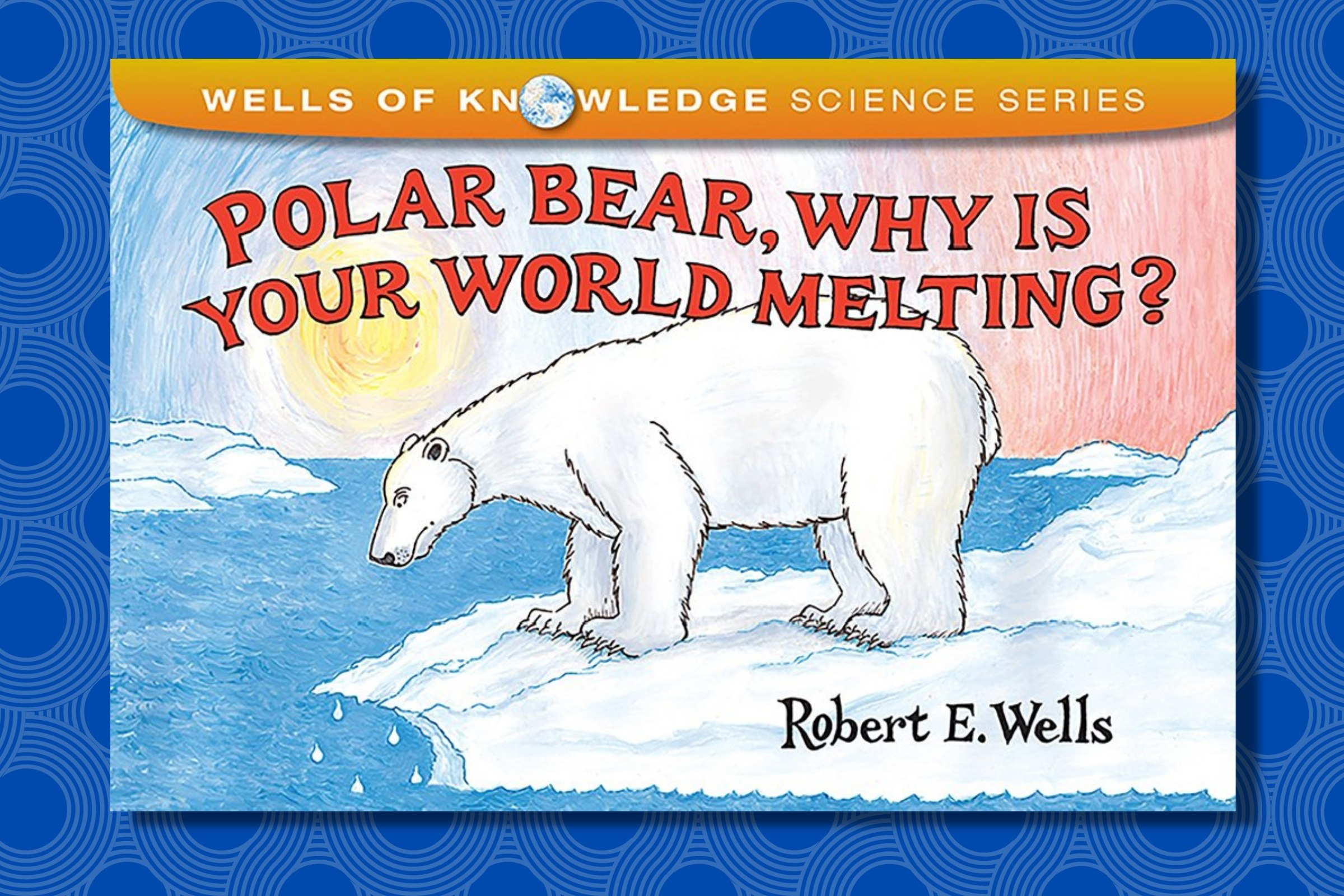
This book is chock full of science, but no page is too overwhelming. The book introduces the greenhouse effect with illustrations showing how the sun’s light gets trapped, before progressing into different types of fossil fuels and why we rely so heavily on them for electricity and transportation. It ends by acquainting readers with renewable energy and some practical tips to reduce energy use.
Buy Now: Polar Bear, Why Is Your World Melting? on Bookshop | Amazon
How We Know What We Know About Our Changing Climate, Lynne Cherry and Gary Braasch

This book is great for more advanced readers who have managed to grasp the basic science behind how and why the planet is warming. It pulls the curtain back to reveal the scientific process, explaining everything from what a hypothesis is to how tree rings give us insight into the past. This includes real-world examples of how kids have helped gather important clues—or data—about the ways our world is changing due to global warming. In doing so, it helps build a deeper trust in science.
Buy Now: How We Know What We Know About Our Changing Climate on Amazon
More Must-Reads from TIME
- Donald Trump Is TIME's 2024 Person of the Year
- TIME’s Top 10 Photos of 2024
- Why Gen Z Is Drinking Less
- The Best Movies About Cooking
- Why Is Anxiety Worse at Night?
- A Head-to-Toe Guide to Treating Dry Skin
- Why Street Cats Are Taking Over Urban Neighborhoods
- Column: Jimmy Carter’s Global Legacy Was Moral Clarity
Contact us at letters@time.com